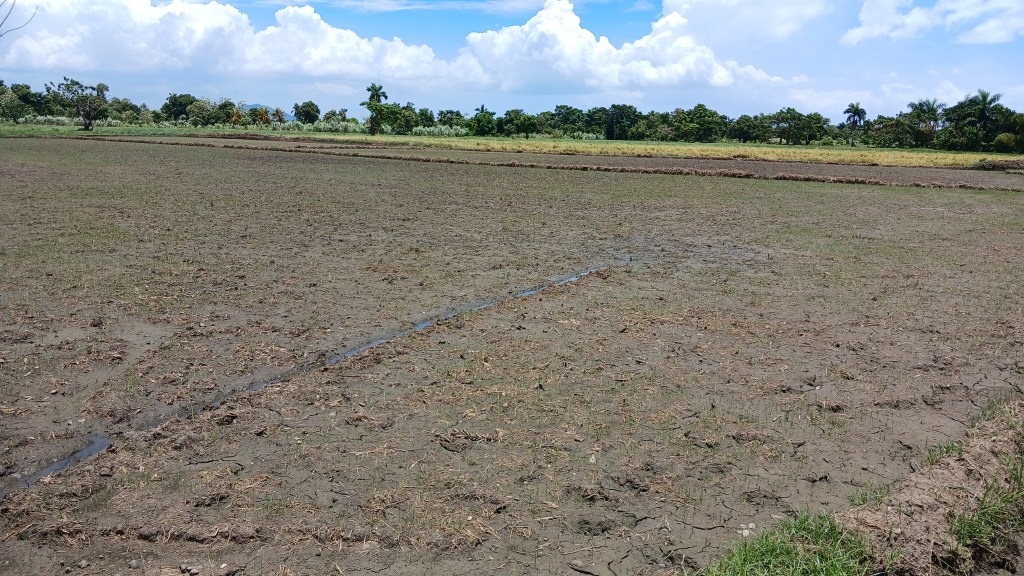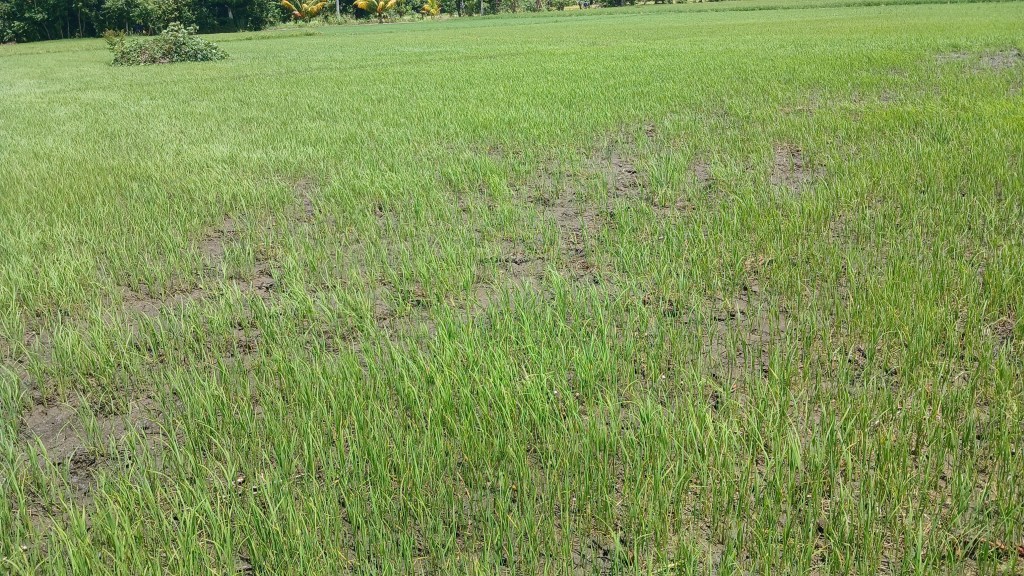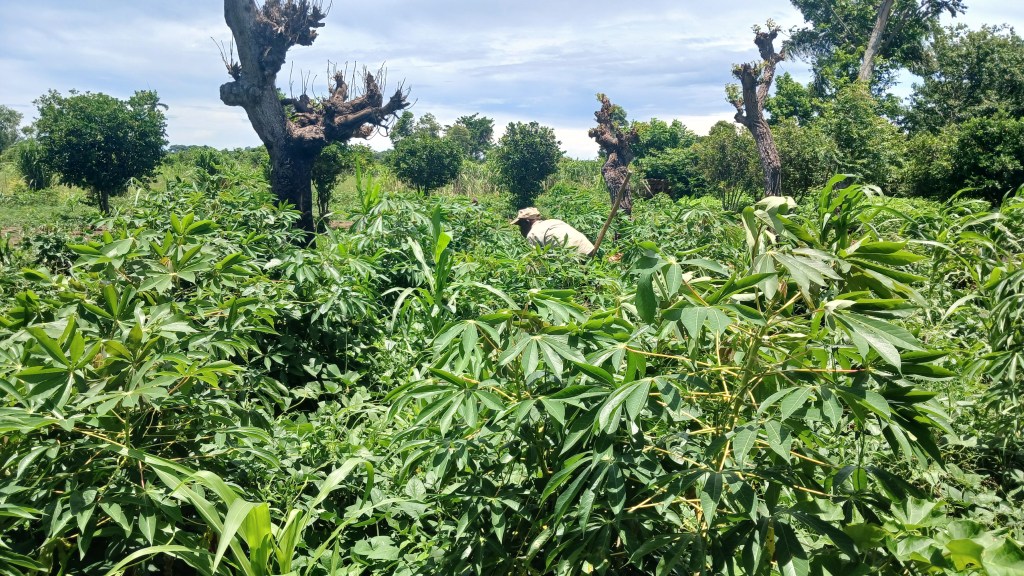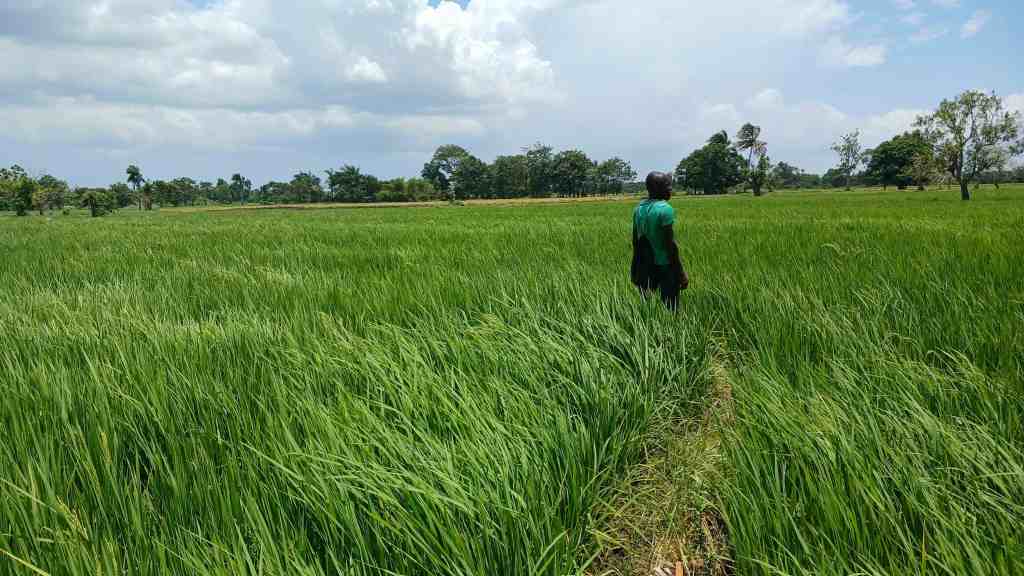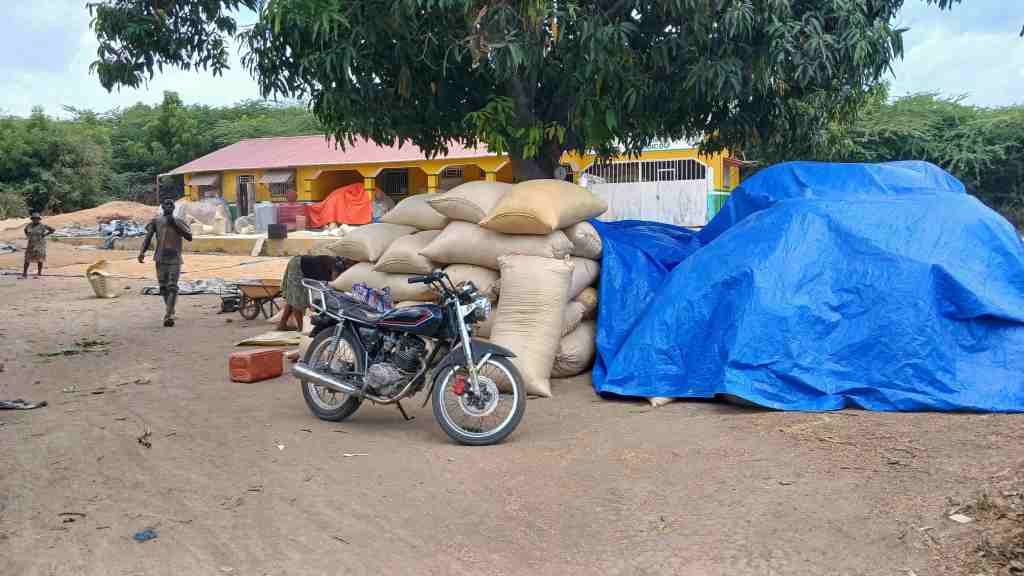Listeners:
Top listeners:
-
 play_arrow
play_arrow
RADIO DROMAGE
 Bloc Party - Helicopter
Nothing much really
Lucy Harty
Bloc Party - Helicopter
Nothing much really
Lucy Harty
 Chase Rice - Ready Set Roll
Are we on air???
Roy Yellow
Chase Rice - Ready Set Roll
Are we on air???
Roy Yellow
 Annoying Orange - Party Rock
You know I come to party hard!!
Annoying Orange - Party Rock
You know I come to party hard!!
Haiti’s northeast Maribaroux Plain irrigation canal sparks economic growth and agricultural revival

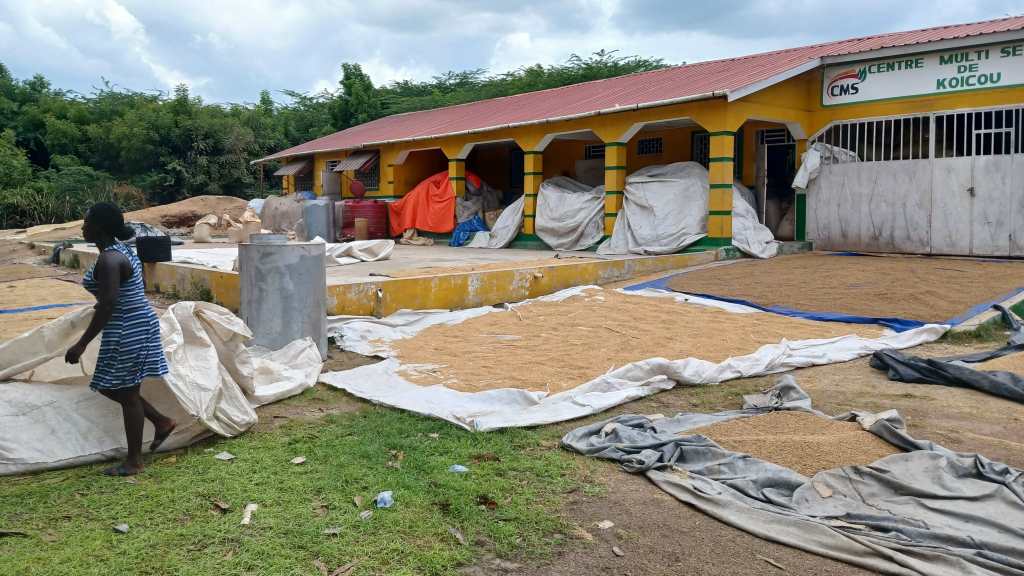
OUANAMINTHE— In the vast stretch of Haiti’s northeastern Maribaroux plain, fields of green, blue, and yellow rice stretch endlessly under the sun. The wind rustles through the rice leaves, and farmers, machetes in hand and boots on their feet, meticulously clean the fields, a testament to their enduring resilience and dedication in the country’’s agricultural landscape. The newly-built irrigation canal on the Massacre River is transforming the plain, from an area long plagued by drought and poor agricultural production into a vibrant irrigated farmland capable of high productivity.
“The situation has improved immensely over the past five months with the arrival of water from the canal,” said Polymnus Rochenel, a rice farmer in the Maribaroux plain of Ferrier. “Rice production has surged, allowing us to produce more than ever before.”
“I have grown twice the amount of rice in my land thanks to the water coming from the canal on the Massacre River,” said Alexis Alphonse, vice-president of the Ouanamimthe canal construction committee and owner of several hectares of land growing rice in the plain.” I can say that for the third rice harvest, I will buy a 4×4 [pickup truck].”
The Massacre River canal construction project, began in April 2021 but faced significant setbacks following the assassination of former president Jovenel Moïse. Local farmers and community leaders resumed the canal project in the spring of 2023, using diaspora funds and their own. Despite a complex history, rising tensions with the neighboring Dominican Republic, they made significant progress toward the canal completion, driven by a vision of food autonomy and their country’s sovereignty. A year later, their efforts have already begun to bear fruit, with significant increases in agricultural production and economic benefits for the region. However, the project’s long-term success will depend on strategic planning, regular maintenance, and efficient management.
“A well-defined system based on better management of river water will allow farmers to carry out intensive agriculture,” says Joseph Pierre-Paul, president of the Northeast Chamber of Commerce.
The irrigation canal is located in Ouanaminthe, a commune in Haiti’s northeast that borders the Dominican Republic’s northwest Dajabon region. At completion, it will run from Ouanaminthe to the Trop Plein drain in Ferrier located in the Maribaroux Plain, another commune about 10 miles north on the Haiti side. About $716,000 (USD) have been raised, according to data available on the fundraising site for the Massacre River canal construction committee, with an additional $3,022 (USD) in in-kind contributions.
Economic impact and agricultural success
The first drop of water flowed into the canal in February during an initial test of the irrigation system. Seven months after it began receiving water, the Maribaroux plain has seen significant improvements in productivity and farmers’ incomes and a revitalization of the local economy. The land irrigation has led to notable agricultural and economic successes. Farmers have reported substantial increases in crop yields, with lands that previously struggled to grow sweet potatoes, corn, and cassava now flourishing with rice.
More than 4,000-hectares of land are irrigated by the water supply transforming arid lands into productive fields, eliminating the need for costly generators and reducing expenses while boosting profits, according to Alexis Alphonse, vice-president of the canal committee and head of the Maribaroux Plain Farmers Association.
“I used to produce 3.33 tons of rice on my land with gas-powered generators. Now, with the canal water, I harvest up to 22.22 tons,” said Ronel Polimus, a farmer and owner of several plots of land.
“I could previously harvest only 2.11 tons of rice from my land, even after buying gas. Today, with the water from the river, I harvest up to 3.33 tons on the same area,” said Toussaint Elianneau, a planter in the same area..
The economic impact is palpable. Among other produce, the price of rice in the Maribaroux plain has dropped significantly, making it more accessible to local consumers according to farmers and food produce traders Haïtian Times interviewed in July. A bag of rice that previously sold for 9,000 Gourdes or $68.18 (USD) now sells for 5,000 Gourdes or $37.87 ( USD)
“Due to the increase in the rice production in our local markets, we are forced to lower prices,” said Marie Marthe Bélizaire, a produce retailer at the Fort-liberté communal market.
Rice traders in cities and towns like Fort-Liberté, Ouanaminthe, and Ferrier report that the price of imported rice from the Dominican Republic and the United States also decreased in the market. The local rice availability and the
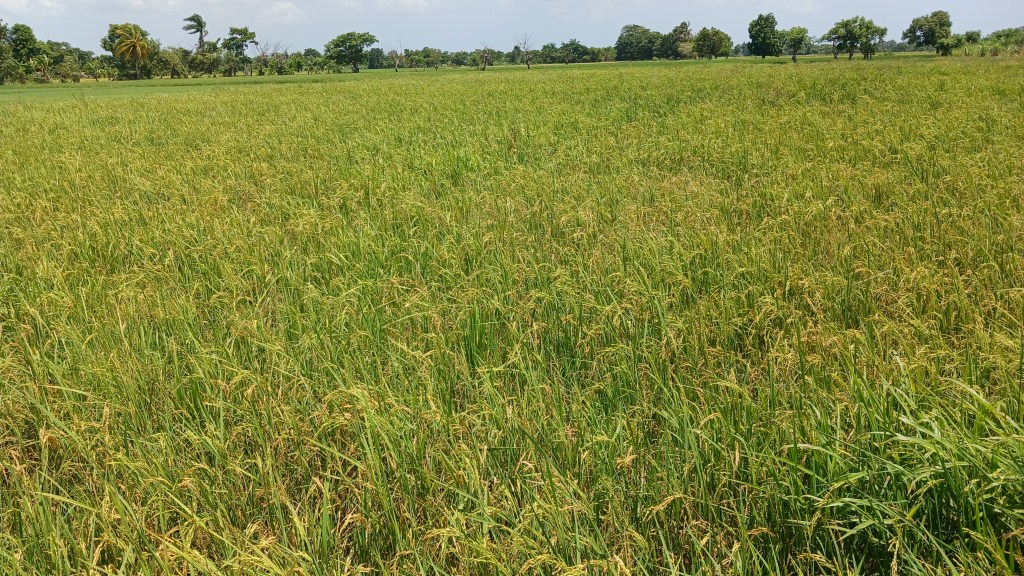
“I was aslo forced to lower the price of the bag of rice because there is more available on the local market,” said Jacques André Louissaint, a trader in the town of Ouanaminthe visibly satisfied with the success of the water irrigation impact.
Several farmers have seen their earnings rise by more than 35% the canal’s committee official confirmed. Some farmers started planting right after the water was made availablewater started othrs two months significantly in just a few months, thanks to the canal’s impact on their fields.
However, no specific data is available on the exact or approximate revenue farmers in the region make from harvesting.
Farmer’s challenges and future needs
Yet, despite these gains, concerns remain about the local market’s capacity to absorb the increased rice production. It takes two to three months for rice to be harvested.
“The local market will not be able to absorb the quantity of rice that the plain produces in a short time, especially after the completion of secondary and tertiary canals and the construction of a reservoir,” noted Longuisse Simon, director of the Agricultural Development Agency.
Local farmers expressed hope for new initiatives to assist them in selling their rice production as they face many challenges particularly the absence of government support. They have voiced frustration over the lack of efforts to help them market their rice, highlighting a critical need for assistance in that area.
“I could previously harvest only 2.11 tons of rice from my land, even after buying gas. Today, with the water from the river, I harvested up to 3.33 tons in the same area.”
Toussaint Elianneau, farmer in the Maribaroux plain, Ferrier.
“We won’t be able to compete with other markets even if we harvest a lot of rice; we won’t be able to sell it to other countries,” lamented Alionord Charles-Pierre, a farmer in the Maribaroux plain.
International trade restrictions, particularly those imposed by the Dominican Republic, further complicate matters. The Dominican market’s barriers prevent Haitian products from being sold in their country. Additionally, issues like limited access to fertilizers and credit exacerbate the difficulties faced by local farmers.
“We cannot compete with Dominican rice, which floods our largest market, in Ouanaminthe, and sells for less compared to our rice,” Charles Pierre added.
Achieving long time sustainability and success
In the past the Maribaroux Plain was irrigated by three rivers, providing ample water for agriculture and making it a fertile region. Farmers who spoke with the Haïtian Times recalled that until mid 1990’s, the plain flourished without water issues, yielding abundant rice harvests. However, beginning in 1995, the plain started experiencing significant water shortages. This shift was attributed to climate change, which not only caused the rivers to dry up but also led to a drastic reduction in the availability of water for irrigation. As a result, crop production in the area suffered greatly. Up until the construction of the irrigation canal water scarcity was a persistent problem, severely impacting agricultural output and livelihoods in the region.
Now, the Maribaroux plain, once struggling to reach even a third of its production capacity before the irrigation canal was built, produces
“This is the first time that I have produced so much rice in the Maribaroux plain. I have rice ready to be harvested, and I have land being prepared to grow more rice,” says Cezard Nalinx, a local planter.
Agricultural specialists highlight that the surge in productivity, driven by the canal, is invigorating the local economy. It’s creating jobs, boosting incomes, and fostering development. Investing in the agricultural sector of the Maribaroux plain is crucial for further enhancing the Massacre River canal’s role as a key component of regional water management.
“An accessible and well-oriented agricultural policy, along with public and private investment in this sector, will encourage market liberalization and support those who invest in agriculture,” says Pierre-Paul.
“In the rainy season, we receive a lot of water in the plain, which sometimes harms our plantations. We hope to have a water catchment system built so that in times of drought, the water from the canal continues to be useful to us,” explains Rochenel Paulimus, a local farmer and landowner.
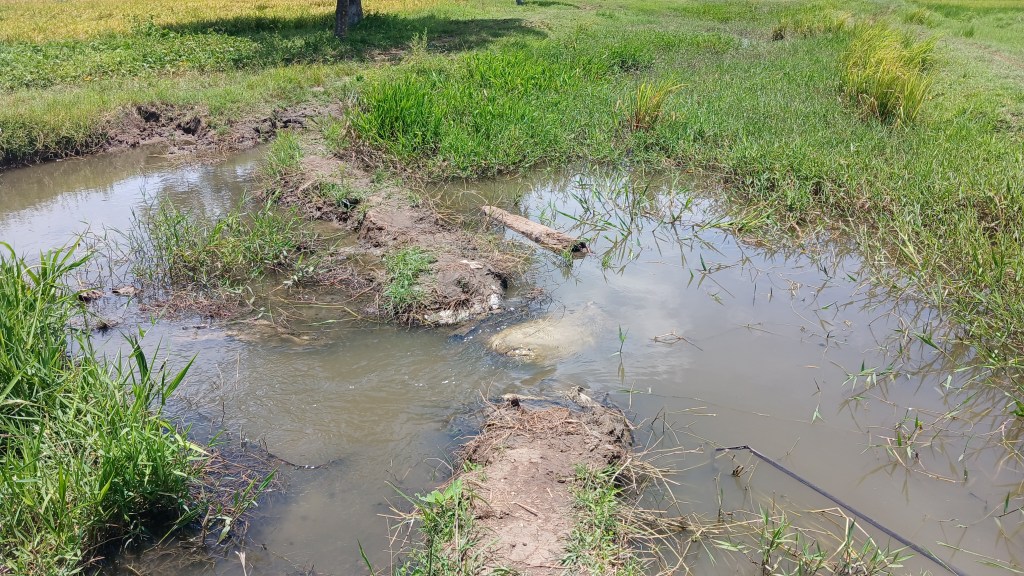
Local farmers and key stakeholders in the region have recommended several crucial measures to fully capitalize on the significant investment in the Massacre River irrigation canal. These include precise planning of the irrigation system, taking into account the water needs of various crops and seasonal variations, regular maintenance of the canal to ensure its effective operation, and effective management of the irrigation system to promote efficient water use.
“The governmet officials must take its responsibilities in managing the canal so that maintenance is done according to international standards,” insists Antoineus Josaphat, another member of the Maribaroux Plain Farmers Association.
Others insist on establishing a joint management committee, raising awareness among farmers, and consulting with other local leaders will enhance participatory management and support intensive agriculture. During a visit to the plain last May, Wideline Pierre, spokesperson for the canal construction committee, emphasized the importance of a robust monitoring and evaluation system.
“This system will help measure performance, identify potential issues, and implement corrective actions, ensuring optimal use of water and maximizing agricultural profits.” Pierre said.
“By following those recommendations and adopting an integrated and sustainable approach to managing the Massacre River irrigation canal, we can maximize the positive effects for farmers and local communities,” Simon said.
The post Haiti’s northeast Maribaroux Plain irrigation canal sparks economic growth and agricultural revival appeared first on The Haitian Times.
Haiti’s northeast Maribaroux Plain irrigation canal sparks economic growth and agricultural revival was first posted on July 31, 2024 at 1:54 pm.
Écrit par: Viewcom04
Articles similaires
Articles récents
- Ritha Pierre takes legal helm at Race Forward, aiming to connect equity work with Haitian communities
- How Haitian gangs extort up to $75 million a year
- Haïti : «Les gangs interagissent désormais avec les élites comme des partenaires»
- République dominicaine : le rappeur haïtien Fantom recouvre sa liberté après plusieurs jours de détention
- COP30 : l’engagement de la jeunesse haïtienne au cœur de la résilience climatique
Commentaires récents
Aucun commentaire à afficher.-
Chart
-
1
play_arrowYo Dim Sa
K-Dans
-
2
play_arrowBiznis Pam
Djakout #1
-
3
play_arrowJere'm
Harmonik
-
Top popular

Le gouvernement haïtien définit ses priorités pour le prochain budget
Processus électoral : le COSHARCO et la CSH accusés de favoritisme
Flashback | Bombardopolis-Haïti, terre d’accueil pour Johannes Drumpft, l’arrière-grand-père de Donald Trump
Pafwa

Haiti’s Fort Jacques, once a great attraction to visitors, is now abandoned as gang-fueled insecurity keeps tourists away



